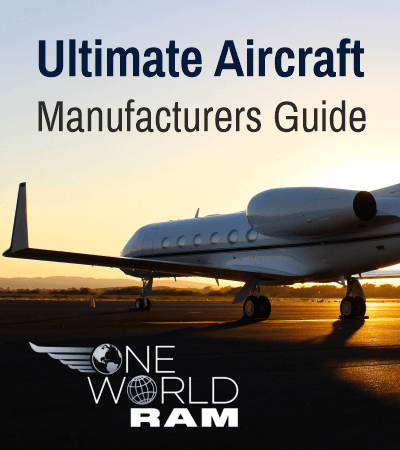Discover the remarkable Embraer 120, a pioneering regional aircraft that has revolutionized short to medium-haul aviation since the 1980s. This comprehensive guide explores the aircraft’s impressive capabilities, innovative design features, and enduring impact on the aviation industry.
Overview of the Embraer 120 Aircraft
The Embraer 120, also known as the EMB-120 Brasilia, represents a milestone in regional aviation engineering. This twin-turboprop aircraft combines exceptional performance with operational efficiency, making it a preferred choice for commercial and private operations.
The aircraft’s distinctive design features include:
- Circular cross-section fuselage for optimal aerodynamics
- Characteristic T-tail configuration
- Low-mounted straight wings for enhanced stability
- Efficient operational costs while maintaining high speeds
- Versatile configuration options for various market needs
History and Development of the Embraer 120
Initially conceived in 1974 under the name Araguaia, the Embraer 120’s development journey spans over a decade. The aircraft first took to the skies in July 1983, and by October 1985, it entered commercial service with Atlantic Southeast Airlines. The name “Brasilia” was chosen to honor Brazil’s capital city, coinciding with significant performance enhancements.
Market Position and Usage
The Embraer 120’s versatility is evident in its various configurations:
- Standard Brasilia – passenger transport
- Extended Range (ER) – longer flight capabilities
- Full Cargo (FC) – dedicated freight operations
- Quick Change (QC) – convertible passenger/cargo configuration
- VC-97 – VIP variant for the Brazilian Air Force
Detailed Specifications of the Embraer 120
| Specification | Value |
|---|---|
| Passenger Capacity | 30 |
| Luggage Space | 9.36 m³ (30.6 ft³) |
| Maximum Speed | 608 km/h (378 mph) |
| Cruise Speed | 584 km/h (362 mph) |
| Maximum Range | 1,964 km (1,220 miles) |
Technical Specifications
The aircraft is powered by dual Pratt & Whitney Canada PW118/PW118A turboprop engines, each generating 1,500 horsepower. With a maximum takeoff weight of 11,500 kg and a service ceiling of 9,085 meters, the Embraer 120 demonstrates impressive performance capabilities in its class.
Design and Structure
The Embraer 120’s engineering excellence is evident in its structural design, featuring a robust yet lightweight airframe constructed with modern materials. The circular fuselage design optimizes interior space while maintaining aerodynamic efficiency, while the T-tail configuration ensures superior stability during all flight phases.
Features of the Embraer 120
The EMB-120 Brasilia distinguishes itself with class-leading features, including the fastest cruise speed in its category at 300 knots. Its efficient design philosophy prioritizes operational economy without compromising performance, making it an enduring choice for regional aviation operations.
Features of the Embraer 120
Cockpit and Avionics
The Embraer 120’s cockpit exemplifies modern aviation design excellence, featuring state-of-the-art avionics that optimize pilot efficiency and flight safety. The standard configuration includes:
- Advanced navigation systems
- Digital flight instruments
- Comprehensive engine monitoring displays
- Ergonomically designed control layout
- Clear, easily readable instrument panels
The thoughtfully designed cockpit layout reduces pilot workload through intuitive controls and clear displays, enhancing both operational efficiency and safety. The integration of modern avionics systems has kept the Embraer 120 competitive and relevant long after its initial market introduction.
Passenger Comfort and Amenities
Despite its compact design, the Embraer 120 delivers exceptional passenger comfort with a capacity for 30 travelers. The aircraft’s comfort features include:
- Pressurized cabin for comfortable high-altitude flying
- Enclosed lavatory for passenger convenience
- Dedicated flight attendant service
- Generous headroom clearance
- Ample luggage storage space
- Relatively quiet turboprop operation
Performance Insights of the Embraer 120
The EMB-120 Brasilia stands out in the regional aircraft market through its exceptional combination of speed, range, and operational efficiency. Its aerodynamic design, featuring a circular cross-section fuselage, T-tail, and low-mounted straight wings, enables high-speed performance while maintaining cost-effective operations.
Engine and Powerplant
| Engine Specification | Details |
|---|---|
| Engine Type | Pratt & Whitney Canada PW118 |
| Power Output | 1,800 horsepower per engine |
| Initial Engine | PW115 (1,500 horsepower) |
| Upgraded Engine | PW118 (enhanced hot and high performance) |
Range and Speed
| Performance Metric | Capability |
|---|---|
| Maximum Cruising Speed (PW118) | 555 km/h (300 knots) |
| Maximum Cruising Speed (PW118A) | 574 km/h (310 knots) |
| Long-range Cruising Speed | 482 km/h (260 knots) |
| Maximum Range | 1,020 km (550 nautical miles) |
Operational Efficiency
The Embraer 120 excels in versatility, particularly suited for:
- Air cargo missions in remote areas
- Humanitarian relief operations
- Short runway operations
- Regional passenger transport
- Mixed cargo-passenger services
Conclusion: The Legacy of the Embraer 120
The Embraer 120 has established an impressive legacy in regional aviation since its mid-1980s debut. Its unique design configuration, combining a circular cross-section fuselage, T-tail, and low-mounted straight wings, delivers high-speed capability while maintaining competitive operating costs. With maximum speeds of 378 mph and a range of 1,220 miles, the EMB-120 continues to demonstrate its enduring value in regional air transportation.
Enduring Impact on Regional Aviation
The Embraer 120’s influence on regional aviation encompasses several key operational advantages:
- Ability to operate from smaller airports with shorter runways
- Enhanced connectivity for previously underserved communities
- Flexible operations for regional airlines and charter services
- Adaptability for various operational roles
- Specialized variants including Extended Range (ER) and Full Cargo (FC) models
The aircraft’s versatility extends beyond standard passenger transport, successfully adapting to diverse roles including cargo operations and VIP configurations. This adaptability has proven invaluable for operators seeking a multi-purpose regional aircraft capable of meeting varied operational demands.
A Testament to Brazilian Aviation Engineering
The Embraer 120 represents a significant milestone in Brazilian aerospace engineering, demonstrating the following achievements:
- Pioneering commercial success for Embraer
- Influential design philosophy focusing on efficiency
- Contribution to regional aircraft design evolution
- Proven reliability in global fleet operations
- Establishment of cost-effective operational standards
Despite the emergence of newer aircraft models, the EMB-120 Brasilia continues to serve as a benchmark for regional aircraft performance. Its enduring presence in global fleets validates its design excellence and operational efficiency, reinforcing its role in connecting communities worldwide through reliable air transportation.





Leave a Reply